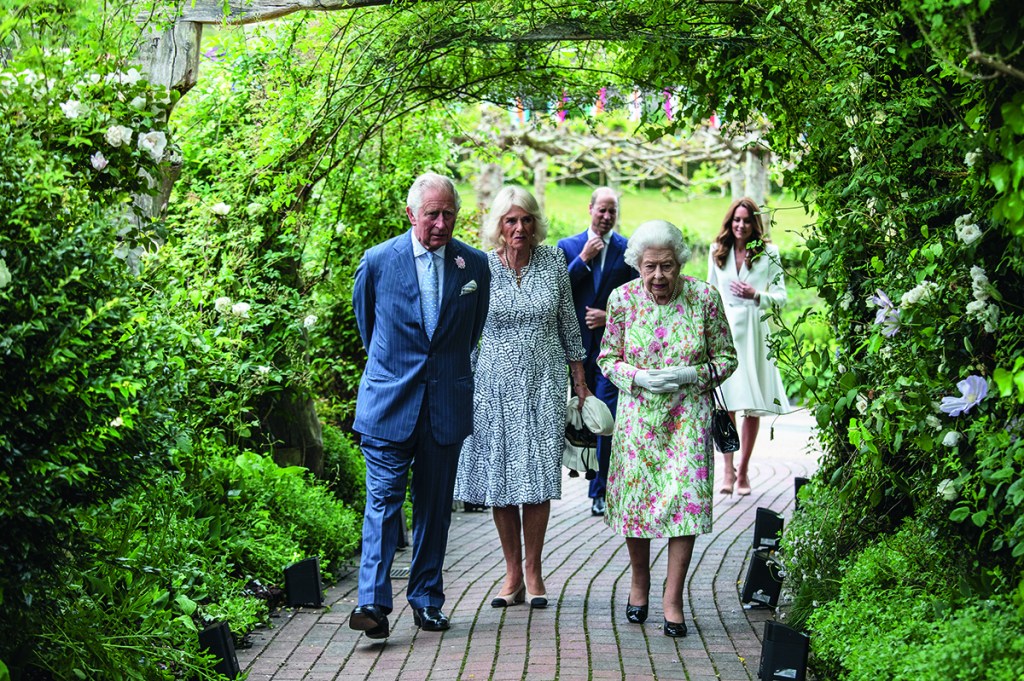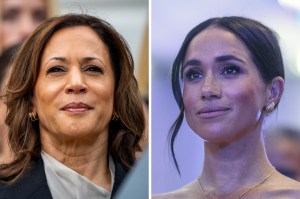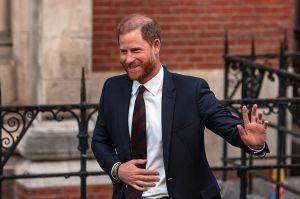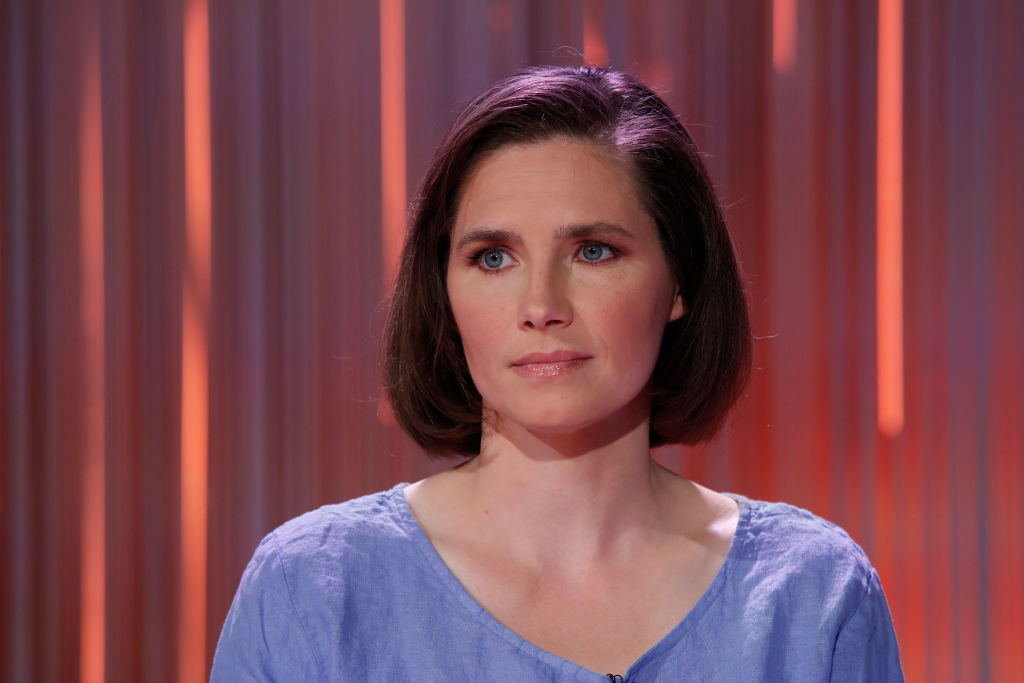The cover blurb, from “Lady Anne Glenconner” on this huge book proclaims: “Brilliant. Tina Brown has inside knowledge and writes so well.” The credit for the author of the 2019 bestseller, Lady in Waiting: My Extraordinary Life in the Shadow of the Crown should in fact be “Lady Glenconner”. You might not think it matters much these days that, over and over again, Tina Brown gets the titles wrong in this book. But this is supposedly the ultimate insider’s look at the royal family over the last forty years or so. And titles are at the heart of the Firm — think of the agony of Prince Harry and Prince Andrew at no longer being able to use their HRH titles and having to give up their honorary military roles.
Lady Glenconner is also being charitable to Tina Brown when she says she writes “so well”. Alas, Brown has a complete tin ear, brilliantly captured in Craig Brown’s pastiches of her style in the British satirical magazine Private Eye. In the opening sentence of this book, she talks about the Sussexes’ Oprah interview as “one of the most ballyhooed in television history.” That is typical of Brown’s taste for odd words, shoehorned into the wrong sort of sentence.
She loves an extended metaphor, too, and crams far too much into frantically overloaded sentences. So Meghan failed “to grasp that the organic lemon and elderflower dessert served at her fairytale Windsor Castle wedding was Alice in Wonderland’s ‘Eat Me’ cake… she would have to simultaneously shrink into the voiceless requirements of service to the Crown.” One can only imagine her copy editor throwing up his hands in horror.
An unwitty person trying to be funny, Brown comes across like a lobotomized P.G. Wodehouse with her metaphors: Princess Diana’s “heat singed the Queen’s tiara.” I’m not sure tiaras can be singed. Protecting her family was apparently the Queen Mother’s “lifelong (often ferocious) priority.” Can priorities be ferocious? And after Camilla had a dish named after her at Green’s restaurant in London — Smoked Haddock Parker Bowles — Brown suggests that Prince Charles “wanted to make an honest kedgeree of his mistress.” That isn’t just unfunny; it doesn’t mean anything.
Frequently, she’s just plain wrong. The diarist James Lees-Milne was not “one of the country’s squirearchy”; the Queen’s cousin’s late husband Angus Ogilvie is actually spelled Angus Ogilvy. And Brown’s attempts to be chatty — calling the Queen “Her Maj” — fall embarrassingly flat. But where Lady Glenconner is right is when she says Tina Brown has inside knowledge — although not nearly as much as Lady Glenconner herself in her own marvelously indiscreet book about her years as a lady-in-waiting to Princess Margaret.
Brown has really done her homework, interviewing the best insiders and royal experts. And that’s when the book comes alive, not least because she quotes them directly and doesn’t put their words into ham-fisted prose. So we hear Prince Charles whine to Mark Bolland, his spin doctor, “When I was young, I did all this [doing the rounds of newspaper editors], but what’s the point? They still believe all the terrible things Diana says about me.” And, as late as his early thirties, Prince Harry, according to his friends, was still complaining that Camilla had converted his old bedroom into an elaborate dressing room.
A lot of the information is taken, with due acknowledgements, from other people’s books — but remains gripping all the same. In his memoir, Peter Mandelson recalled Prince Charles asking him what the public thought of him. Mandelson said people thought “You feel sorry for you self; that you’re rather glum and dispirited. This has a dampening effect on how you are regarded.”
This shaft of honesty didn’t go down well. Charles was so unused to hearing the truth that he asked Camilla afterwards in a tortured way, “Is that true? Is that true?” She replied, “I don’t think any of us can cope with you asking that question over and over again for the next month.”
And, most grippingly and disgustingly, Brown finds out from Lee, the wife of Walter Annenberg, former American ambassador to Britain, that Prince Andrew spent two days with them, largely watching porn in his bedroom. Prince Andrew’s reputation doesn’t improve when we hear that he refers to Fergie as a “fat cow.”
There are plums like this on practically every page. They’re not quite from the horse’s mouth — for this book, Brown hasn’t bagged an interview with any major members of the royal family. When she does meet Princess Diana — with Anna Wintour in 1997 — she isn’t a good reporter. She reproduces no dialogue and says only commonplace things about her “huge, limpid eyes, the skin like a freshwater pearl, the supermodel height.”
But she has got the next best thing: golden nuggets of gossip that feel real rather than apocryphal. At Lord Lichfield’s funeral in the Guards’ Chapel, William “Backstairs Billy” Tallon, the Queen Mother’s former steward, is surprised the Queen isn’t there: “She was his cousin, after all.” Quick as a flash, the royal biographer Hugo Vickers responds, “Yes, except she was more of a cousin from his point of view than hers.”
At such moments, you get a firsthand sense for life is really like within the palace walls. Stephen Fry’s anecdotes — told directly to Brown — are particularly good and vivid. At breakfast at Highgrove one day, Fry was inspecting the buffet when he opened a tureen containing Prince Charles’s linseed.
Prince William said, “Oh no. Don’t go near the bird table, Stephen. That’s only for Pa.” On the whole, juicy stories like this only confirm the received wisdom about the royal family: Charles is a fusspot; Camilla is good fun; the Queen is a non-complaining model of royal behavior.
Sometimes, though, the anecdotes shed new light on the familiar legends. Contrary to what lots of hacks have said, William and Harry actually preferred the huntin’, shootin’ and fishin’ life their father offered rather than the ritzy alternatives Diana provided. In the July before she died, Diana took the boys on Mohamed Al-Fayed’s yacht. “The flash and excess of Fayed’s hospitality,” writes Brown, “embarrassed William in particular. At sea, he stayed below decks [sic] much of the time to avoid the long lenses of the paparazzi.”
Despite the book’s many faults, you find yourself racing through its 570 pages. And you end up with a convincing view of how the monarchy works best. As Queen Mary said to a relation, “You are a member of the British royal family. We are never tired and we all love hospitals.” The late Prince Philip, too, knew the way to negotiate a royal marriage. As he told a servant: “Do you want some marriage advice? Spend enough time apart, and make sure you don’t have all the same interests.”
Being spoiled is fatal for royals, as it was for Princess Margaret, whose youthful glamour, marred by self-indulgence, led to a melancholy end. Brown quotes some marvelous lines from Penny Mortimer, the wife of the author John Mortimer:
Princess Margaret: “What do you think of the postage stamps nowadays?”
Penny Mortimer: “Well, ma’am, I don’t really think much about them.”
Princess Margaret: “I think they’re ghastly. Buildings and birds and things. I want to see pictures of my sister.”
And what will become of today’s glamorous princess, the Duchess of Sussex? Tina Brown is largely on her side. As she puts it in her strange, tortured English: “Meghan knew she was destined to be a star from her earliest dazzle.”
Meghan’s bad reception in royal circles, Brown argues, is often thanks to a language problem. As a Hollywood starlet, she’s used to asking for things directly, not in the roundabout “You couldn’t possibly do this, could you?” way of the English upper classes.
Brown talks to her estranged father, Thomas Markle, who refers to Prince Harry as “the snottiest man I’ve ever heard in my life.” She also has good material on the bankruptcy of both Meghan’s parents and her half-sister. But, still, it remains a mystery why Meghan is on quite such bad terms with her family. This book has some wonderful little insights into the workings of royal life, but in the end it’s too shallow to dig really deep into its greatest mysteries.
Harry Mount is author of How England Made the English (Penguin). This article was originally published in The Spectator’s June 2022 World edition.

























